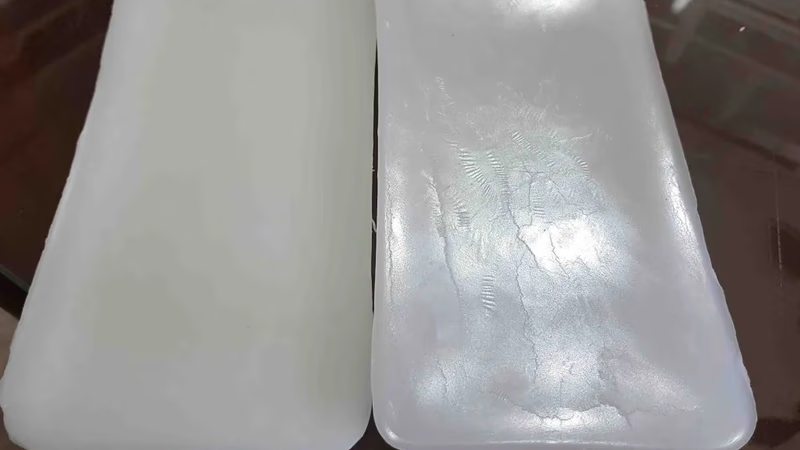
How does B2B trade impact commodity markets like paraffin in West Asia?
The paraffin trade in West Asia and the Middle East has emerged as a significant commodity market, driven by its diverse applications in industries such as cosmetics, pharmaceuticals, and manufacturing. Paraffin, derived primarily from petroleum, comes in both liquid and solid forms, categorized under types like paraffin wax (HS Code 271290) and paraffin oil (HS Code 271210). West Asia’s extensive petroleum reserves make it a global hub for paraffin production, with verified exporters and importers leveraging regional B2B marketplaces to facilitate trade. Commodity-focused platforms in the Middle East, such as Aritral, have simplified international trade by offering supply chain solutions and verified listings of paraffin products. These platforms enable businesses to access market insights, streamline logistics, and build robust business networks. Liquid paraffin, commonly used in pharmaceuticals, and solid paraffin, prevalent in candle-making and coatings, are highly demanded across Asia. The paraffin market intertwines with other petroleum-based commodities like base oil, bitumen, and petroleum coke. Base oil, a precursor to engine oil, is essential in lubricant production, while bitumen dominates the construction sector.
These interconnected markets benefit from B2B advertising platforms that enhance visibility and trust among regional stakeholders. The rise of AI-driven trade solutions further impacts commodity markets in West Asia, ensuring transparency and efficiency in paraffin and other petroleum derivatives. B2B marketplaces foster direct communication between manufacturers and buyers, promoting high-quality paraffin production and distinguishing premium-grade paraffin from substandard variants. West Asia’s trade landscape continues to evolve, emphasizing the role of verified exporters and importers in shaping global supply chain dynamics. Aritral, as an AI-powered B2B platform, exemplifies how digital tools transform commodity trading in the region, offering services like product listings, marketing insights, and global sales assistance to streamline paraffin and related markets.
-
 Mohammad Javad Baqeri 1 months ago
Mohammad Javad Baqeri 1 months ago Iran
Aluminum, iron and steel, pickles, dried fruits and groceries, saffron and spices, metal waste, gold, tar, dairy products, jam and honey, copper, silv
Iran
Aluminum, iron and steel, pickles, dried fruits and groceries, saffron and spices, metal waste, gold, tar, dairy products, jam and honey, copper, silv
I\m directly in contact with all those suppliers from Iran`Details
-

 Yemen
Ben Naaman Lamasalizamat Almuamalat Altaalimiyya WalSina'iyya BiAjhizatiha Wamawadiha Alkimiyaiyya
Yemen
Ben Naaman Lamasalizamat Almuamalat Altaalimiyya WalSina'iyya BiAjhizatiha Wamawadiha Alkimiyaiyya
#Everyone has everything related to laboratories: ✅Models in all shapes ✅Tools and experimental devices ✅#Educational_Toys ✅#Glassware ✅#Chemicals ✅#P...Details
-
 شرکت پالایش نفت مرند 3 days ago
شرکت پالایش نفت مرند 3 days ago Iran
Base Oil
Iran
Base Oil
The base oil produced by Marand Oil Refining Company has a pour point of minus six and a flash point of 225 degrees Celsius. The color of this product...Details
-
 Hanieh Ghanbari Rad 3 days ago
Hanieh Ghanbari Rad 3 days ago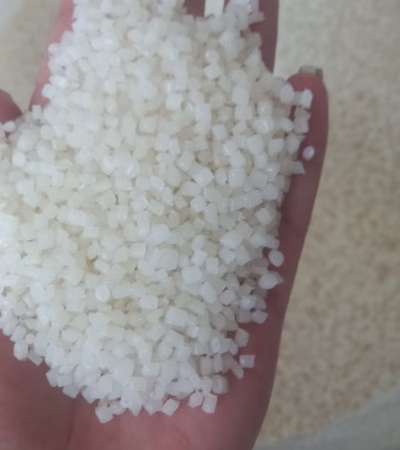 Iran
Petrochemical Materials, Chemicals and Petroleum
Iran
Petrochemical Materials, Chemicals and Petroleum
Supply of petrochemical and petroleum materials, bitumen, and base oils from IranDetails
-
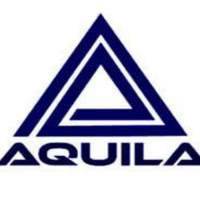 Ahmadreza 4 days ago
Ahmadreza 4 days ago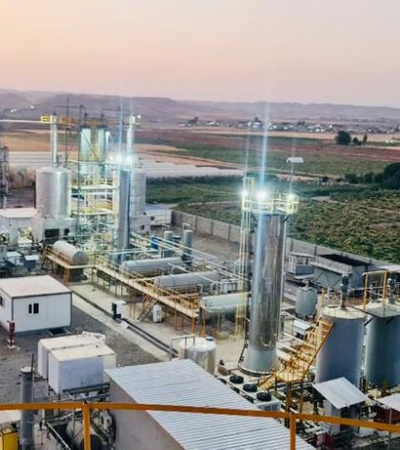 Iraq
Sale of bitumen, diesel and naphtha
Iraq
Sale of bitumen, diesel and naphtha
Bitumen producer with grades 6070 and 5070 in jumbo and bulk diesel producer with different standard naphtha producer with low sulfur and mercaptanDetails
-
 Yasir 12 months ago
Yasir 12 months ago Yemen
Precious Stones
Yemen
Precious Stones
I have relied on GodDetails
-
 Arbenco Petrochemical Company 17 months ago
Arbenco Petrochemical Company 17 months ago Bahrain
I have 50 thousand tons of methanol. Do you buy or do I have a customer for them?
Bahrain
I have 50 thousand tons of methanol. Do you buy or do I have a customer for them?
For sale: 50 thousand barrels of methanol, phone number: 0097339211616Details
-
Exploring Base Oil Trade in the Middle East and West Asia

Base oil, a fundamental raw material in the production of lubricants such as engine oil, holds significant importance in the Middle Eastern and West Asian commodity trade. Base oil serves as the backbone for various products, including bitumen, paraffin, and petroleum coke, making its trade dynamics critical to regional economic activity. In Southwest Asia, the brokerage of base oil thrives due to a robust network of verified exporters and importers facilitated by B2B marketplaces and trade platforms. These platforms enhance supply chain solutions by enabling direct communication between commercial players and promoting regional product listings. The engine oil market in West Asia underscores the increasing demand for high-quality base oil. The trade trends in this region reflect the growing integration of base oil into broader petroleum-based commodities, such as bitumen and asphalt. Bitumen, essential for road construction, and asphalt are heavily traded in the Middle East, aligning with infrastructure development goals. Similarly, petroleum coke (petcoke), another byproduct, is widely used in industrial applications, with key suppliers and manufacturers concentrated in West Asia.
Paraffin, available in liquid and solid forms, plays a pivotal role in the regional market. Derived from crude oil, its trade is expanding due to its versatile applications, ranging from candle production to industrial coatings. The Middle East and West Asia are evolving into hubs for paraffin intermediaries, further bolstered by efficient supply chain frameworks. Aritral, an AI-powered B2B trade platform, offers verified listings, market insights, and brokerage solutions, supporting commercial players in navigating the complexities of international trade for base oil and related commodities. By leveraging such platforms, businesses gain access to new markets, increased visibility, and streamlined operations in the engine oil and base oil sectors.
-
Bitumen and Asphalt Trade Insights in West Asia

Bitumen, commonly referred to as asphalt, plays a critical role in the commodity trade dynamics of West Asia and the Middle East. Derived from crude oil, bitumen serves as a key material in road construction and industrial applications. The Middle East, known for its rich petroleum reserves, is a significant player in the global bitumen market. The trade of bitumen and related petroleum products, such as base oil, paraffin, and petroleum coke, is facilitated by advanced B2B marketplaces and supply chain solutions. These platforms help verified exporters and importers connect efficiently, ensuring reliable transactions and optimized logistics. In the engine oil sector, bitumen and base oil are integral as raw materials. The demand for engine oil across West Asia has grown due to the region"s expanding automotive industry. B2B trade platforms provide market insights, regional product listings, and direct communication channels, allowing businesses to explore trends in engine oil trade.
Base oil, a primary component of engine oil, also sees robust demand, with its trade dynamics influenced by factors like pricing, quality, and supplier reliability. Petroleum coke, another derivative, is essential for industries such as cement and power generation. Manufacturers and suppliers across West Asia benefit from trade advertising platforms that boost visibility and networking opportunities. Similarly, paraffin, available in both liquid and solid forms, is widely used in packaging, pharmaceuticals, and cosmetics. Its trade in West Asia is supported by intermediaries specializing in regional logistics and market intelligence. Aritral, an AI-driven B2B trade platform, simplifies these transactions by offering tools like product listing, direct communication, and AI-powered marketing. This digital ecosystem enhances transparency, reduces barriers, and fosters growth in the Middle East commodity market. "
-
Engine Oil Trade Dynamics in West Asia and Middle East

Engine oil, a critical lubricant for automotive and industrial machinery, plays a vital role in ensuring efficient performance and durability. In West Asia and the Middle East, the engine oil market is heavily influenced by regional trade dynamics, with strong ties to the petroleum industry. The trade of base oil—a primary component of engine oil—and its derivatives such as bitumen, paraffin, and petroleum coke, serves as the backbone for many regional import/export activities. West Asia is a hub for engine oil production and distribution, with verified exporters and importers utilizing B2B marketplaces to connect with buyers across Asia. Platforms specializing in commodity trade within the Middle East offer regional product listings and market insights, fostering business networking opportunities. These tools are crucial for understanding the nuances of engine oil quality, pricing, and types, which vary based on viscosity grades and applications in cars, heavy-duty vehicles, and industrial machinery. Base oil, the foundation for manufacturing engine oil, is brokered extensively in Southwest Asia. Key players in the region ensure a steady supply chain for production facilities, with trade advertising platforms promoting transparency and verified transactions.
Similarly, bitumen and petroleum coke markets in West Asia are significant for road construction and industrial energy needs, with competitive pricing influenced by global crude oil trends. Paraffin, another petroleum byproduct, is vital for both solid and liquid applications. Its trade in the Middle East intersects with broader commodity flows, emphasizing the importance of intermediaries who bridge supply-demand gaps. Aritral, an AI-driven B2B platform, simplifies the trade of engine oil and its components, providing services like product listing, AI-powered marketing, and direct communication tools to support global sales. With verified profiles, Aritral fosters trust and efficiency, enabling businesses to capitalize on the robust trade opportunities in West Asia"s oil-based industries. "
-
Paraffin Trade Insights in West Asia and the Middle East

The paraffin trade in West Asia and the Middle East has emerged as a significant commodity market, driven by its diverse applications in industries such as cosmetics, pharmaceuticals, and manufacturing. Paraffin, derived primarily from petroleum, comes in both liquid and solid forms, categorized under types like paraffin wax (HS Code 271290) and paraffin oil (HS Code 271210). West Asia’s extensive petroleum reserves make it a global hub for paraffin production, with verified exporters and importers leveraging regional B2B marketplaces to facilitate trade. Commodity-focused platforms in the Middle East, such as Aritral, have simplified international trade by offering supply chain solutions and verified listings of paraffin products. These platforms enable businesses to access market insights, streamline logistics, and build robust business networks. Liquid paraffin, commonly used in pharmaceuticals, and solid paraffin, prevalent in candle-making and coatings, are highly demanded across Asia. The paraffin market intertwines with other petroleum-based commodities like base oil, bitumen, and petroleum coke. Base oil, a precursor to engine oil, is essential in lubricant production, while bitumen dominates the construction sector.
These interconnected markets benefit from B2B advertising platforms that enhance visibility and trust among regional stakeholders. The rise of AI-driven trade solutions further impacts commodity markets in West Asia, ensuring transparency and efficiency in paraffin and other petroleum derivatives. B2B marketplaces foster direct communication between manufacturers and buyers, promoting high-quality paraffin production and distinguishing premium-grade paraffin from substandard variants. West Asia’s trade landscape continues to evolve, emphasizing the role of verified exporters and importers in shaping global supply chain dynamics. Aritral, as an AI-powered B2B platform, exemplifies how digital tools transform commodity trading in the region, offering services like product listings, marketing insights, and global sales assistance to streamline paraffin and related markets.
-
Petroleum Coke Trade Insights in West Asia
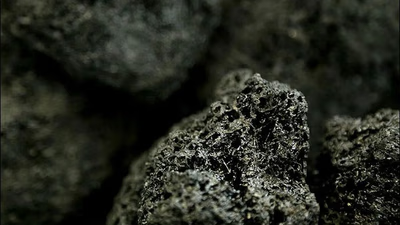
Petroleum coke (Petcoke), a solid carbon-rich material derived from oil refining, plays a vital role in commodity trade across West Asia and the Middle East. The region is a significant producer of petcoke, with its production driven by the abundance of crude oil and advanced refining capacities. Middle Eastern petcoke, also known as petroleum coal, is utilized in industries such as cement, steel, and aluminum, owing to its high calorific value and cost-effectiveness compared to traditional fuels. However, its environmental impact and fluctuating market prices remain challenges. B2B marketplaces in Asia, including platforms like Aritral, are transforming the trade dynamics of petcoke and related commodities such as engine oil, base oil, bitumen, and paraffin. Verified exporters and importers on these platforms provide streamlined supply chain solutions, ensuring reliable and transparent transactions. These trade advertising platforms also offer regional product listings and market insights, enabling businesses to navigate pricing trends and demand fluctuations effectively. The engine oil market, intrinsically linked to base oil, paraffin, and bitumen trade, is similarly impacted by B2B dynamics.
For instance, base oil, a key raw material for engine oil production, sees significant demand in West Asia. Supply chain solutions facilitate its movement across borders, while regional product listings and verified suppliers enhance accessibility. Bitumen and paraffin, essential for construction and industrial applications, also benefit from similar supply chain efficiencies provided by trade platforms. Petroleum coke suppliers in West Asia and petcoke manufacturers in the Middle East are leveraging these platforms to expand their reach. Market insights reveal that West Asia’s production rate of petroleum coke is steadily growing, driven by industrial demand and competitive pricing. As the global commodity trade evolves, businesses must continuously adapt to shifting market dynamics, supported by tools like AI-powered B2B platforms. Aritral offers services such as product listing, direct communication, and AI-powered marketing to enable seamless global trade operations.
-
Application of paraffin
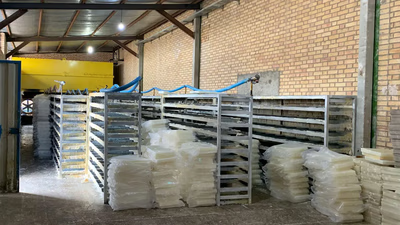
Paraffin wax is a versatile material with numerous applications across various industries. In candle making, it is favored for its clean burning properties and ability to retain scents. Additionally, it serves as a food-grade coating that enhances the appearance and shelf life of fruits and candies. In cosmetics, paraffin wax is used in products like lip balms and lotions to provide moisture and improve texture. Its utility extends to art projects, where it is employed in encaustic painting and mold-making. Paraffin wax also plays a crucial role in investment casting, providing precise patterns for metal castings. Furthermore, microcrystalline wax, a variant of paraffin, is utilized in adhesives and sealants due to its flexibility. The therapeutic benefits of paraffin wax are evident in spa treatments where it aids in heat therapy and skin moisturization.
Other industrial uses include serving as a lubricant, anti-mold agent, and waterproofing agent for fabrics. Its role in packaging materials enhances moisture resistance and sealing capabilities. Overall, paraffin wax"s diverse applications make it an essential component across multiple sectors. "
-
What is paraffin?
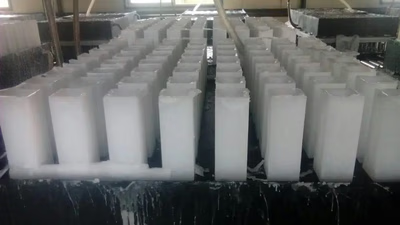
Paraffin is a group of waxy hydrocarbons derived from petroleum, primarily composed of long-chain alkanes. It exists in solid and liquid forms, with paraffin wax being the most recognized variant. Paraffin wax has a low melting point, making it ideal for applications such as candle production, skincare products, and food coatings. In the food industry, it enhances the appearance and shelf life of fruits and vegetables. Additionally, paraffin is used in packaging materials to improve moisture resistance. Beyond consumer products, paraffin plays a significant role in industrial processes including lubricants, electrical insulation, and manufacturing plastics and rubber products. It is also utilized in livestock feed to address digestive issues. The petrochemical industry extracts paraffin from oil or coal, classifying it into solid and liquid types based on application areas: food, industrial, and health. Its versatility extends across various sectors such as textiles, adhesives, cosmetics, and more.
-
Paraffin production in West Asia (Middle East)

The Middle East, rich in crude oil reserves, is a leading producer of paraffin wax, primarily derived from petroleum refining. Countries like Saudi Arabia, Iran, Iraq, Kuwait, and the UAE have established advanced refining infrastructures that enable efficient production of paraffin wax as a byproduct. The region"s vast resources ensure a steady supply of raw materials and allow for significant export capacities to meet global demand. The quality of paraffin wax varies based on refining techniques and feedstock composition, catering to diverse market needs. The competitive pricing and strategic geographical location of the Middle East facilitate easy transportation to international markets. This integration within the petroleum value chain enhances production efficiency and maximizes value from crude oil byproducts. As a result, the paraffin industry contributes significantly to foreign exchange earnings in the region while shaping global market dynamics through its substantial export volumes. "
-
Types of paraffin
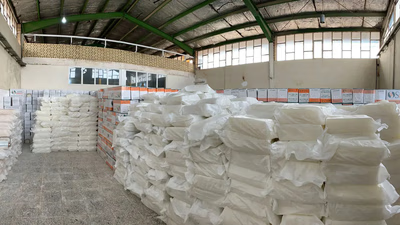
Paraffin wax is available in various types, each tailored for specific applications across industries. Fully refined paraffin wax is the purest form, known for its high melting point and clarity, making it ideal for food coatings, cosmetics, and pharmaceuticals. Semi-refined paraffin wax retains some impurities and is used in products like crayons and rubber compounds. Microcrystalline wax offers flexibility and adhesion, suitable for adhesives and industrial coatings. Pattern wax is designed for investment casting, providing low melting points and dimensional stability for intricate designs. Container wax is formulated for container candles, ensuring good scent throw and burn performance. The market"s demand drives manufacturers to innovate and develop specialized formulations to meet diverse customer needs. Ongoing research enhances the properties of paraffin waxes, addressing challenges in niche applications while maintaining quality standards. "
-
How to distinguish good paraffin from bad paraffin

Quality paraffin is determined by its intended use, with different industries requiring specific characteristics. For instance, in candle making, a lower oil percentage indicates higher quality, while lubrication applications may require the opposite. High-quality paraffin should be white, pure, and free from contaminants like oil and sulfur. It must have a consistent melting point for even performance and a clean appearance without discoloration or foreign particles. Odorless and smooth-textured paraffin is preferred, as strong odors may signal impurities. Reputable suppliers often ensure quality through testing and customer feedback is crucial for assessing product reliability. Transparency and stability over time are also key indicators of good paraffin wax. It should burn cleanly with minimal residue and maintain consistent performance across batches.
Compatibility with other materials is essential for specific applications, particularly in candle making or cosmetics. Safety standards must be met when using paraffin in direct contact with skin or food. Ultimately, choosing a reliable supplier who balances quality with cost is vital for obtaining high-quality paraffin wax.
-
Discovery and production of paraffin
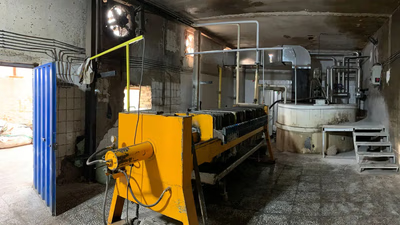
Paraffin oil, discovered in the 19th century by Karl von Richen Bach, revolutionized the candle industry due to its cleaner and safer properties compared to traditional oils. The commercial production of paraffin wax began with Scottish chemist James Young, who developed extraction methods from crude oil. As demand for lighting increased during the industrial revolution, paraffin wax became a popular alternative to tallow candles and whale oil lamps. Advancements in refining processes, such as vacuum distillation and hydrocracking, improved the quality of paraffin wax. Today, it is primarily produced as a byproduct of petroleum refining through distillation and purification techniques. The applications of paraffin wax have expanded beyond lighting to include food preservation, molding, and casting. However, environmental concerns regarding petroleum-based products have led to interest in alternative wax sources like soy and palm waxes. The industry has also diversified with synthetic waxes that cater to specific needs across various sectors.





















